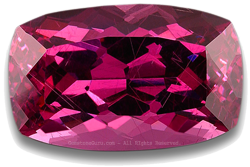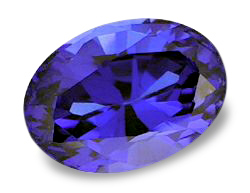 It can be difficult, when making jewelry or gemstone purchases, to decipher the terminology used to describe the origins of a gemstone. The significant differences in price of natural, synthetic and imitation stones can easily turn what looks like a good deal into a costly overpriced purchase. Use this guide to learn what these words mean for gemstones on the market today.
It can be difficult, when making jewelry or gemstone purchases, to decipher the terminology used to describe the origins of a gemstone. The significant differences in price of natural, synthetic and imitation stones can easily turn what looks like a good deal into a costly overpriced purchase. Use this guide to learn what these words mean for gemstones on the market today.
Know that it is natural to ask the seller about the origins of a gemstone and if there have been any treatments and enhancements. Should you ever have jewelry repaired in the future, this is information you need to give to your jeweler so they are aware of what they’re working with.
What are Natural Gemstones?
The term Natural refers to a gemstone that is found growing/produced in the natural world without the influence of human activity. These would be gemstones mined from the earth as well as those discovered naturally occurring in the water (such as pearls and coral). Natural gems have the allure of rarity when compared to their synthetic counterparts – a natural pearl harvested from the ocean can be hundreds if not thousands of times more expensive than its synthetic counterpart. A natural star sapphire, likewise, will be at a premium because of its rarity next to a lab created star sapphire. Whilst a gemstone is natural, it could have still undergone treatments and enhancements to change its appearance. An example would be a natural Tanzanite or Sapphire that was heated (a treatment) to deepen its color intensity or natural diamond that has been laser drilled to bleach out an inclusion (an enhancement). Whilst some treatments are common and expected, others are not. Read our guide to gemstone enhancements to learn more.
Whilst a gemstone is natural, it could have still undergone treatments and enhancements to change its appearance. An example would be a natural Tanzanite or Sapphire that was heated (a treatment) to deepen its color intensity or natural diamond that has been laser drilled to bleach out an inclusion (an enhancement). Whilst some treatments are common and expected, others are not. Read our guide to gemstone enhancements to learn more.
In the Unites States, the FTC has specific legal guidelines around the required disclosures when selling gemstones and gemstone jewelry. For example, all treatments to natural gemstones that are temporary, that can be removed or that make the stone less valuable than a non-treated equivalent should be disclosed prior to the sale of the stone. It is entirely acceptable to ask your jeweler if a gemstone you are interested in is natural and if it has had any treatments or enhancements. When shopping online for a high value purchase, make sure you insist on a certification from an independent gemstone laboratory
What are Synthetic / Lab Created or Grown Gemstones?
 Synthetic gemstones are physically identical to their natural gemstone counterparts that are mined from the Earth. They have the same physical properties and chemical composition as naturally occurring gemstones.The sole difference is that these are gemstones that are grown and manufactured in laboratories under controlled environments. In these controlled environments, all of the chemicals, minerals that are present in the natural environment are introduced into an environment at the right temperature and pressure levels, allowing synthetic gemstones to “grow”.
Synthetic gemstones are physically identical to their natural gemstone counterparts that are mined from the Earth. They have the same physical properties and chemical composition as naturally occurring gemstones.The sole difference is that these are gemstones that are grown and manufactured in laboratories under controlled environments. In these controlled environments, all of the chemicals, minerals that are present in the natural environment are introduced into an environment at the right temperature and pressure levels, allowing synthetic gemstones to “grow”.
Because of their growth within a controlled environment, as opposed to the chaotic and random natural world, synthetic gemstones will usually have fewer inclusions and more vivid color than their natural counterparts, mainly because ‘impurities’ have not been allowed to impact the stone. Being man-made, these stones will typically command a lower price than their naturally occurring counterparts.
Commonly found synthetic gemstones include:
- Pearls – Usually called Cultured Pearls, these pearls are formed by introducing a foreign substance into an oyster with the sole purpose of having the oyster form a pearl. Nearly all, some estimate up to 99%, of the pearls currently on the market are cultured pearls. An x-ray is required to determine if pearls were formed naturally or were cultured.
- Sapphires and Rubies – Lab-created Rubies and Sapphires are widely found in the current jewelry market. Synthetic Sapphires and Rubies offer vivid colors and fewer inclusions than their naturally occurring counterparts. Star Sapphires are commonly found as synthetics as well.
- Emeralds – Lab created Emeralds are widely available and immensely popular for their depth of color and fewer inclusions in comparison to the more ‘included’ counterparts found in nature.
- Diamonds – Synthetic Diamonds are currently being manufactured, but the production cost is still very high, prohibiting them from being a viable less-expensive option to natural diamonds.
Synthetic gemstones are also sometimes referred to as “Cultivated”, “Cultured” and “Man Made”.
What are Gem Simulants and Imitations?
Typically made of plastics, glass, resin and dyes, these substances are used to imitate the color, shape or look of a natural gemstone. These gemstones are easily identified as such via tests within a laboratory by a qualified gemologist.Cubic Zirconia (commonly called “CZ”) is a common diamond simulant. Though they are colorless like white Diamonds, they do not have the same chemical or light refracting properties of Diamonds and they are used in jewelry to imitate the look of Diamonds. Moissanite is also a widely available diamond simulant.
Additionally, you will find glass and plastic cut and dyed to resemble natural gemstones ranging from sapphires to opals. These are called imitations because they, other than trying to mimic a color or similar characteristic, have no actual chemical similarity to the natural stone.
Natural gemstones are beautiful, in part, for their rarity and the fact that the right chemicals, minerals and conditions were present in the ground at the right time to form a unique gemstone. This rarity is highly sought after and can make a stone much more valuable.
Synthetics are also impressive, as they are often created with noticeably fewer inclusions and have vivid color. Synthetics can often be had for a fraction of the cost of a naturally occurring gemstone. Knowing these differences will make you a more informed and discerning gemstone and jewelry buyer!
Are lab grown gemstones expensive?
What are the pros and cons of natural vs synthetic gemstones?
As such, in our view, adding color to our life is what we are passionate about – and if we can afford to do it with a bit of nature’s natural expressions of beauty or with lab-grown stones a little less taxing on our wallet – so be it.
Is asking about the origin of a gemstone important to you? Have you ever had to decide between a natural versus a synthetic stone when you were making a gemstone purchase? We’d love to hear your experiences.
